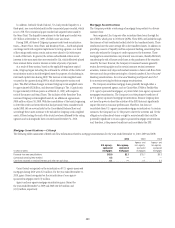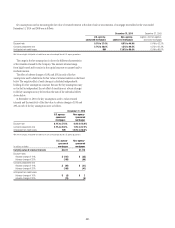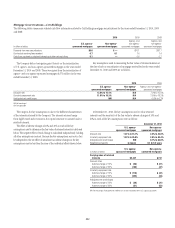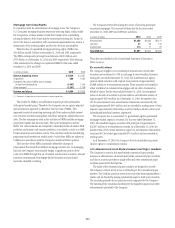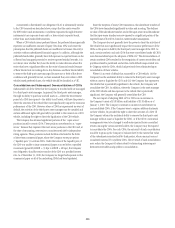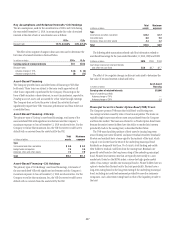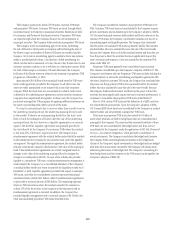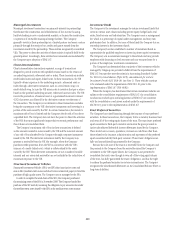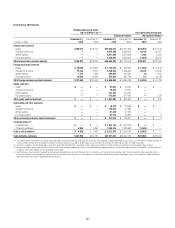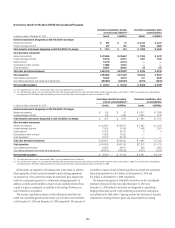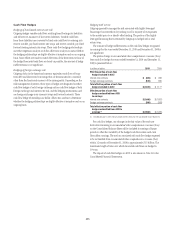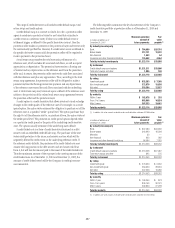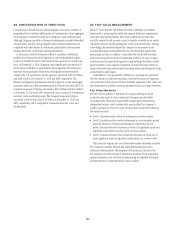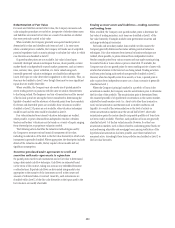Citibank 2010 Annual Report Download - page 252
Download and view the complete annual report
Please find page 252 of the 2010 Citibank annual report below. You can navigate through the pages in the report by either clicking on the pages listed below, or by using the keyword search tool below to find specific information within the annual report.250
23. DERIVATIVES ACTIVITIES
In the ordinary course of business, Citigroup enters into various types of
derivative transactions. These derivative transactions include:
Futures and forward contracts,• which are commitments to buy or
sell at a future date a financial instrument, commodity or currency at a
contracted price and may be settled in cash or through delivery.
Swap contracts, • which are commitments to settle in cash at a future date
or dates that may range from a few days to a number of years, based on
differentials between specified financial indices, as applied to a notional
principal amount.
Option contracts,• which give the purchaser, for a fee, the right, but
not the obligation, to buy or sell within a specified time a financial
instrument, commodity or currency at a contracted price that may also be
settled in cash, based on differentials between specified indices or prices.
Citigroup enters into these derivative contracts relating to interest rate, foreign
currency, commodity, and other market/credit risks for the following reasons:
Trading Purposes—Customer Needs: • Citigroup offers its customers
derivatives in connection with their risk-management actions to
transfer, modify or reduce their interest rate, foreign exchange and
other market/credit risks or for their own trading purposes. As part of
this process, Citigroup considers the customers’ suitability for the risk
involved and the business purpose for the transaction. Citigroup also
manages its derivative-risk positions through offsetting trade activities,
controls focused on price verification, and daily reporting of positions to
senior managers.
Trading Purposes—Own Account: • Citigroup trades derivatives for its
own account and as an active market maker. Trading limits and price
verification controls are key aspects of this activity.
Hedging:• Citigroup uses derivatives in connection with its risk-
management activities to hedge certain risks or reposition the risk profile
of the Company. For example, Citigroup may issue fixed-rate long-term
debt and then enter into a receive-fixed, pay-variable-rate interest rate
swap with the same tenor and notional amount to convert the interest
payments to a net variable-rate basis. This strategy is the most common
form of an interest rate hedge, as it minimizes interest cost in certain yield
curve environments. Derivatives are also used to manage risks inherent
in specific groups of on-balance-sheet assets and liabilities, including
investments, loans and deposit liabilities, as well as other interest-sensitive
assets and liabilities. In addition, foreign-exchange contracts are used to
hedge non-U.S.-dollar-denominated debt, foreign-currency-denominated
available-for-sale securities, net investment exposures and foreign-
exchange transactions.
Derivatives may expose Citigroup to market, credit or liquidity risks in
excess of the amounts recorded on the Consolidated Balance Sheet. Market
risk on a derivative product is the exposure created by potential fluctuations
in interest rates, foreign-exchange rates and other factors and is a function
of the type of product, the volume of transactions, the tenor and terms of the
agreement, and the underlying volatility. Credit risk is the exposure to loss
in the event of nonperformance by the other party to the transaction where
the value of any collateral held is not adequate to cover such losses. The
recognition in earnings of unrealized gains on these transactions is subject
to management’s assessment as to collectability. Liquidity risk is the potential
exposure that arises when the size of the derivative position may not be able
to be rapidly adjusted in periods of high volatility and financial stress at a
reasonable cost.
Information pertaining to the volume of derivative activity is provided in
the tables below. The notional amounts, for both long and short derivative
positions, of Citigroup’s derivative instruments as of December 31, 2010 and
December 31, 2009 are presented in the table below.


